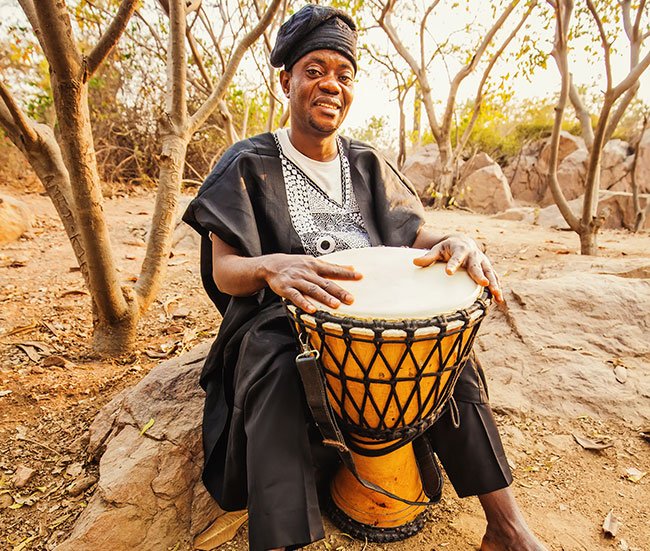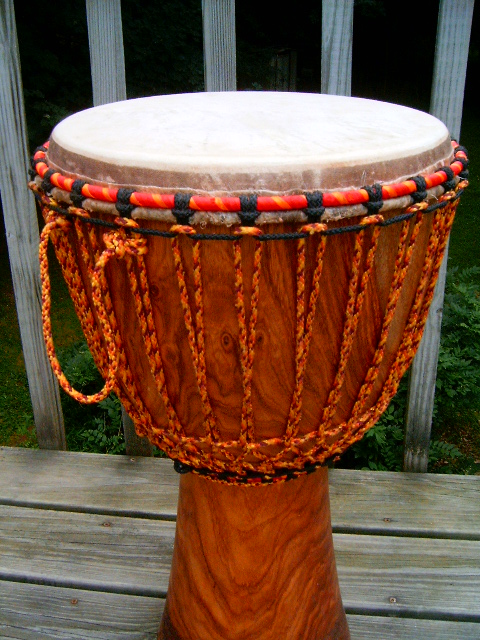Posted by Steve Head on 5th Jun 2023
The History of Djembe
The History of Djembe
Djembe has its origins in West Africa, particularly in Mali, Guinea, and Ivory Coast. The drum was traditionally played during ceremonial occasions, such as weddings, funerals, and initiation rites. Djembe was also used to communicate important messages across long distances, as the drum's sound could be heard from miles away. Over time, the popularity of Djembe spread to other parts of Africa and the world, and it became a symbol of African culture and identity.
Construction of Djembe
Djembe is made from a single piece of wood, usually from the djala or lenke tree. The drum's shell is carved out of the wood and then covered with goat or cow skin, which is held in place by a system of ropes and rings. The ropes are used to tighten or loosen the skin, which affects the sound of the drum. Djembe comes in various sizes, from small ones that fit in the palm of your hand to large ones that require two people to carry.
Playing Techniques
Playing Djembe requires a combination of physical and mental skills. The drummer uses both hands to produce different sounds on the drum, depending on where and how the drum is struck. The three main sounds produced by Djembe are the bass, tone, and slap. The bass is produced by striking the drum with the palm of the hand, while the tone is produced by striking the edge of the drum with the fingers. The slap is produced by striking the drum with the fingertips.
Djembe playing also requires a sense of rhythm and timing. The drummer must be able to keep a steady beat and communicate with other musicians in the group. Djembe playing is often accompanied by other instruments, such as the dunun, balafon, or kora.
Cultural Significance of Djembe
Djembe is more than just a musical instrument. It has a deep cultural significance in West Africa and is often used in traditional ceremonies and rituals. Djembe is also used to tell stories and convey messages, such as warnings or announcements. In some cultures, only certain people are allowed to play the Djembe, such as members of specific families or tribes.
Conclusion
In conclusion, Djembe is a unique and fascinating instrument with a rich history and cultural significance. Its construction, playing techniques, and cultural importance make it a valuable addition to any musician's repertoire. We hope that this article has provided you with comprehensive information about Djembe and helped you understand why it is such a beloved instrument around the world.
As an Amazon Associate, I earn from qualifying purchases. This means that if you click on the link and make a purchase, I may receive a small commission at no extra cost to you. This helps support my work in providing quality content. Thank you for your support!




